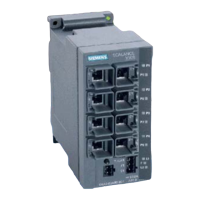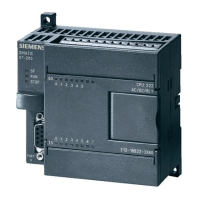Operating Your Text Display (TD) Device
5.5 Viewing the Screens and the Alarms
Text Display (TD) User Manual
112 System Manual, 08/2008, A5E00765548-03
(6&
(6&
(6&
(6&
(QWHU
(QWHU
7'&6FUHHQV8SWR6FUHHQV(DFKIRU8SWR*URXSV
3UHVV(6&WRGLVSOD\WKH8VHU
0HQXRIWKHVFUHHQV
8VHU0HQX
6FUHHQ
8VHWKH83RU'2:1DUURZ
EXWWRQWRVFUROOWKURXJKWKH
VFUHHQVIRUWKLVJURXS
6FUHHQV
'HIDXOW'LVSOD\0RGH
3UHVV(6&WRGLVSOD\WKH
0DLQ0HQX
8VHUPHQXLWHP
8SWRHQWULHV
8VHUPHQXLWHP
0DLQ0HQX
3UHVV(6&WRGLVSOD\WKH
GHIDXOWGLVSOD\
'LVSOD\$ODUPV
&386WDWXV
6HW7LPH
5HOHDVH3DVVZRUG
&OHDQ.H\SDG
7'6HWXS
6HFRQGDU\'LVSOD\
%LW(QDEOHG$ODUPV
$ODUPPHVVDJH
8VHWKH83RU'2:1DUURZ
EXWWRQVWRVFUROOWKURXJKWKHOLVW
RIDODUPPHVVDJHV
3UHVV(6&WRGLVSOD\
WKH0DLQ0HQX
Figure 5-8 TD 100C - Navigating between the Default and Secondary Displays
Displaying the Alarms
If you created both screens and alarms when you configured the TD device, the main menu
of the TD device includes a command that allows you to access the secondary (non-default)
display. The TD device always returns to the default display mode after a period of inactivity.
As shown in the TD 200C example in the figure below, the main menu provides a Display
Alarms command for the default TD configuration. If you configured alarms as the default
display, the main menu lists a User Menu entry.
After displaying the alarms, you use the UP and DOWN arrows to scroll through the
sequential list of alarms.

